Known in some circles as the “beautiful fighter” — and not necessarily in a congratulatory sense — Dead or Alive is nonetheless my favorite fighting game series, and that status is only reinforced with the introduction of Dead or Alive 5. If you liked what makes DOA the game that it is, you’ll be happy to know that the fifth iteration is still the same familiar fighter with the same gameplay dynamics, coupled with new characters and stages, an interesting (if cheesy) story mode, and beautifully updated visuals. It is in my opinion the best entry in the main DOA series.
Offered on both Xbox 360 and PS3 this time around, the options in DOA5 are pretty similar to those found in its 2006 predecessor DOA4. Gameplay modes include story, time attack, survival, and both solo and tag-team versus modes. The story mode is perhaps the most radical departure, featuring a winding timeline of events that sees you play through a melodramatic story from the perspective of an entire roster full of characters. Different chapters of the story place you in the shoes of different characters, giving you a bit of experience with everyone. It’s a good place for series novices to start, given that it’s a good way to see which characters you like using. You’ll unlock a couple of costumes for Kasumi along the way, though completing story mode repeatedly is no longer the secret to unlocking costumes for everybody, nor does it give you any character-specific endings.
The story is typically cheesy and goofy, with bizarre and fairly threadbare writing, but all of this seems par for the course in a fighting game so you likely won’t mind. This is, actually, the deepest “story mode” that I’ve seen in a fighter; rather than a 30-second cutscene here or there, or a custom ending based on the character you chose (see DOA4), story mode peppers each chapter with cutscenes and exposition, letting you get to know each of the characters a little bit more. Of course, you’ll largely be sitting there going “What?” or “Huh?” because of the wackiness of the situations and the lack of logic behind many of them. But just as you don’t want to ask how Michael Knight can keep Turbo Boosting KITT without suffering spinal compression injuries, you don’t want to ask many questions about DOA5‘s story. (Speaking of spinal compression, try asking Jack Gill, stunt driver on Knight Rider, what he knows about that.)

If it’s unlockables that you want, you’ll need to venture into the survival, time attack and versus modes. Here you can make multiple runs through a series of fights, and as you complete certain difficulty tiers, higher tiers unlock. I haven’t really ventured into this area much at all, but my friend Pooch has, and some of the higher levels get pretty darn challenging. In an unusual switch, and unlike DOA4, the survival mode is not endless but rather is limited to a finite number of rounds, depending upon the difficulty level you’ve chosen. Notably absent from this game, however, is a tag survival mode.
There is also, of course, an online component to DOA5 although that’s “not really my bag, baby” to put it bluntly. Borrowing a page from Street Fighter IV and other recent fighters, there are hundreds and hundreds of titles and badges you can unlock and attach to your online profile, proving to other players how far you’ve gotten. The game also keeps track automatically of your wins and losses with each character, which fighter you prefer to use, and scores your progress. It’s unlikely that I’ll ever touch the online mode since I am so completely inept, but it’s definitely there.
In regards to the online netcode, I have heard a lot of complaints about lag when playing online matches. I’ve also heard that if you disable “throwdowns”, which are apparently a one-on-one ad-hoc challenge system that human players can use, it greatly reduces the lag. This seems like a bug, but there’s no telling if it’ll ever be patched.
The high point of DOA5 for me is the visual upgrade. In a recent post comparing DOA4 to Tekken 6, I took particular stock of the visuals and noted the appealing yet somewhat dated visuals of both, though I mentioned that an attractive look has always been at the forefront of the DOA experience. That certainly hasn’t changed, as DOA5 delivers one of the most impressive-looking fighting games this generation. Head and shoulders above DOA4, it features not only more detailed environments, but also much more realistic looking characters, nearly all of whom have undergone very meticulous visual overhauls.

Bass, for example, is one of the most radically changed fighters from previous installments. Formerly an enormous beefcake wrestler, he now looks like he’s lost about half of his weight and appears to be more suited to riding Harleys than inhabiting a carnival freakshow. (This is actually an improvement, in case you weren’t sure.) The female characters, which are an…ahem…staple of the DOA series, have also been redesigned to look less like porcelain dolls and more like actual humans, both in proportion and in complexion. Although the “wavy breast physics” are still present, they seem a bit less laughably ridiculous than in previous titles (and as my friend Pooch noted, it seems like it’s more their clothes that wave around now instead of their actual chests). Overall, each one of the characters has undergone significant upgrades, and there are also a handful of new characters included, three of which are from the classic Virtua Fighter (which Team Ninja claims is their way of paying homage to their game’s ancestry).
I was a bit disheartened to learn that even more extensive character redesigns had been planned for DOA5 but were rolled back at the request of some rabid fans. Apparently the team had been trying to make the female characters a bit more realistic, with less balloon-like breasts and more human faces, but there was quite a backlash over this — particularly in the case of Hitomi, one of the series’ star characters (next to Kasumi), whose face received a significant change in appearance. Although I don’t mind the characters looking a little more familiar, it’s kind of depressing to heard that when faced with more realistic breast proportions, a bunch of fans went ape and demanded the melons back. If true, this provides a lot of ammunition for those who like to think of DOA (and its fans) as little more than a cheesecake simulator. Although the game certainly has plenty of Japanese-flavored influence in that direction, it’s also a very competent and fun fighter, especially for those who (like me) aren’t technical experts and have neither the skill nor prowess for games like Tekken.
Another aspect that failed to further the idea that the DOA series was “growing up” were the swimsuit costumes that were available to those who purchased the Collector’s Edition of the game; swimsuits that were only available for the game’s roster of female characters. (At least Tekken Tag Tournament 2 could be credited for including swimsuits for its male characters as well.) It’s almost like the developers were saying, “We’re trying to make a more mature Dead or Alive. Now here are some bikinis for the girls to wear!”
For all that, though, the game is stunning to look at, and you get less of a feeling of ooky-kookiness in doing so because the characters look less like underage dolls. So that’s a plus.

Sound effects, I should mention — since such things are a hobby of mine — are also significantly improved over previous DOA installments, approaching (and even besting) the beefy impact sounds of the Tekken series. The soundtrack is also excellent, and even comes on an audio CD (in a real, full-size jewel case no less) if you buy the Collector’s Edition.
Environment design in DOA is another of the series’ highlights, and the fifth installment continues that tradition with a new set of interesting environments that are chock full of “danger zones” (cue the Sterling Archer) that are more animated and interactive than before. My particular favorite stage is called “Home”, and has you battling through a series of interior environments, crashing through walls, destroying furniture and knocking over kitchen utensils as you and your opponent beat each other to a pulp. The environment will also leave a visual imprint on the characters fighting in it, as they’ll become grimy and sweaty, or even chapped from cold weather and ice.
The tag team gameplay also makes a return in DOA5, and there are certain special moves that you can perform if you are fighting with one of a select team of characters. For instance, Tina and the new MMA fighter Mila are one such pre-ordained “team”, and have a number of special tag moves that they can do. Bass and Rig are another such team, as are Pai Chan and Leifang. I haven’t discovered all of the team combinations yet but this is a pretty fun dynamic. The story mode, actually, helps set up these relationships and actually gives these characters some motivation for teaming up together, which is more than you’d usually expect from a fighter.
You’ll notice that I haven’t touched on the actual fighting dynamics that much, and that’s because they are largely unchanged from DOA4. With the exception of a slightly more complex hold mechanic where, in some situations, you actually have to move the control stick in two different directions, the moves and mechanics for holding and countering are pretty much the same. New in this iteration is a “charge move” that you can do when your health bar flashes red, which I believe happens after you take a certain amount of damage in short succession. If you land the hit, you’ll get a sort of “bullet time” animation and your opponent will be unable to block the attack. Also new in DOA5 is the choice of “Casual” mode and “Action” camera, which presumably offer an experience tailored more toward fighting game novices or casual fans like myself. (I haven’t tried the more advanced mode to see how it compares.)

Lastly, I’ll mention that DOA4’s photo mode has returned, and while you still can’t export your photos out of the game on the 360 (and thus all of the screenshots in this post were taken by snapping photos of my plasma TV), there are some notable improvements. You can now save replays of your own matches and take photos during playback, and even better, you can also now pause that playback at any time and then freely move the camera to better compose your photos. (I fondly call it “Jim-Bo Mode” — inside joke.) Doing all this will even net you a series of achievements/trophies!
Overall, DOA5 is a must-have for any Dead or Alive fan, and also comes with my personal recommendation for anyone who likes fighting games but who doesn’t have the time or the skill to master a more technical fighter. It’s fun, it’s accessible, it’s gorgeous to look at, and it’s got plenty for you to do.
Team Ninja has also begun to offer downloadable costume packs, with the first one releasing just this week for the final cost of free. Hard to beat that. Downloaded costumes are unlocked immediately, I believe, so it’s like instant gratification.





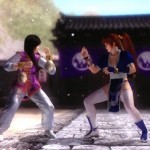
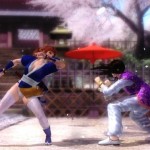
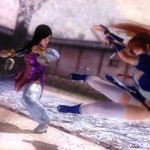

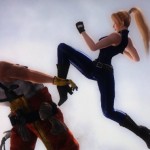



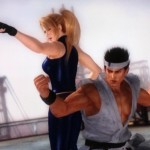



Small correction re: survival mode. It’s not strictly limited to 10 rounds; the number of rounds increases along with the difficulty. So, while Rookie mode has 10 rounds, Easy mode has 20, and I assume each difficulty adds on rounds in a similar fashion (I haven’t played beyond that point yet, so I can’t say with 100% certainty).
I still miss Tag Survival mode, though.
I wasn’t sure if I was remembering that detail correctly, but I figured you would correct me if I was wrong. 🙂 Post has been updated accordingly.
Looking forward to putting in some effort on those unlockables this weekend (and dipping into Dead Island as well).